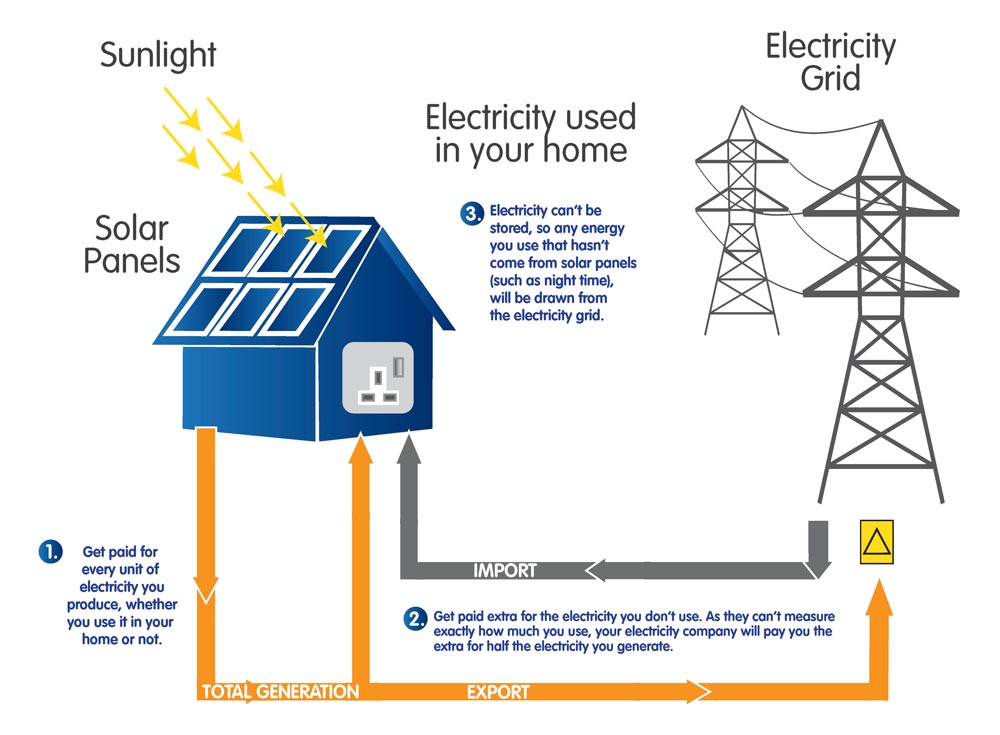Feed-in tariffs scheme
Feed-in tariff are regulated by the Feed-In Tariff (Electricity Generated from Solar Photovoltaic Installations) Regulations, and are administered by the Regulator for Energy and Water Services (REWS).
These tariffs change periodically and it is advisable to check with the Regulator for latest updates. A feed-in tariff of EUR 0.15 per kWh is now applicable for PV installations of up to 40 kWp in capacity.
Applying for Feed-in Tariffs in Malta
When applying for feed-in tariff, the applicant can opt to choose either the “full export” option, thus committing to sell all PV energy to the grid for 20 years at EUR 0.15 per kWh generated, or a “partial export” option, whereby PV energy generated would primarily be used to offset applicant’s own consumption, whilst any surplus that may be generated and not consumed at a time it is generated would be sold to the grid at the same tariff.
Selecting the right option depends on the applicant’s status and consumption patterns. If the applicant consumes more energy than a PV system would produced, and is billed at the rates higher than the feed-in tariff, then a partial export option may be more financially feasible. But if the applicant’s own consumption is relatively low, and / or where the average billing rate for the energy consumed is substantively lower than the feed-in tariff, then a full export option may be more advantageous.
Malta photovoltaic incentives
Virtue Solaris offers its clients free professional advice on the tariff options best suited to client’s specific circumstances. In either case, a 20-year feed-in tariff contract represents one of the most secure and financially attractive investment options available.
Activity tags
Feed-in tariffs scheme
Feed-in tariff are regulated by the Feed-In Tariff (Electricity Generated from Solar Photovoltaic Installations) Regulations, and are administered by the Regulator for Energy and Water Services (REWS).
These tariffs change periodically and it is advisable to check with the Regulator for latest updates. A feed-in tariff of EUR 0.15 per kWh is now applicable for PV installations of up to 40 kWp in capacity.
Applying for Feed-in Tariffs in Malta
When applying for feed-in tariff, the applicant can opt to choose either the “full export” option, thus committing to sell all PV energy to the grid for 20 years at EUR 0.15 per kWh generated, or a “partial export” option, whereby PV energy generated would primarily be used to offset applicant’s own consumption, whilst any surplus that may be generated and not consumed at a time it is generated would be sold to the grid at the same tariff.
Selecting the right option depends on the applicant’s status and consumption patterns. If the applicant consumes more energy than a PV system would produced, and is billed at the rates higher than the feed-in tariff, then a partial export option may be more financially feasible. But if the applicant’s own consumption is relatively low, and / or where the average billing rate for the energy consumed is substantively lower than the feed-in tariff, then a full export option may be more advantageous.
Malta photovoltaic incentives
Virtue Solaris offers its clients free professional advice on the tariff options best suited to client’s specific circumstances. In either case, a 20-year feed-in tariff contract represents one of the most secure and financially attractive investment options available.

